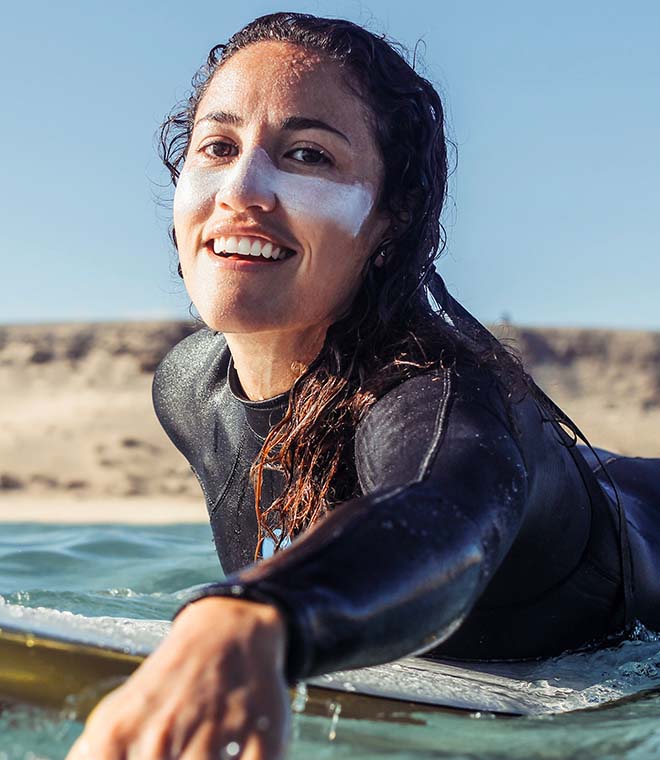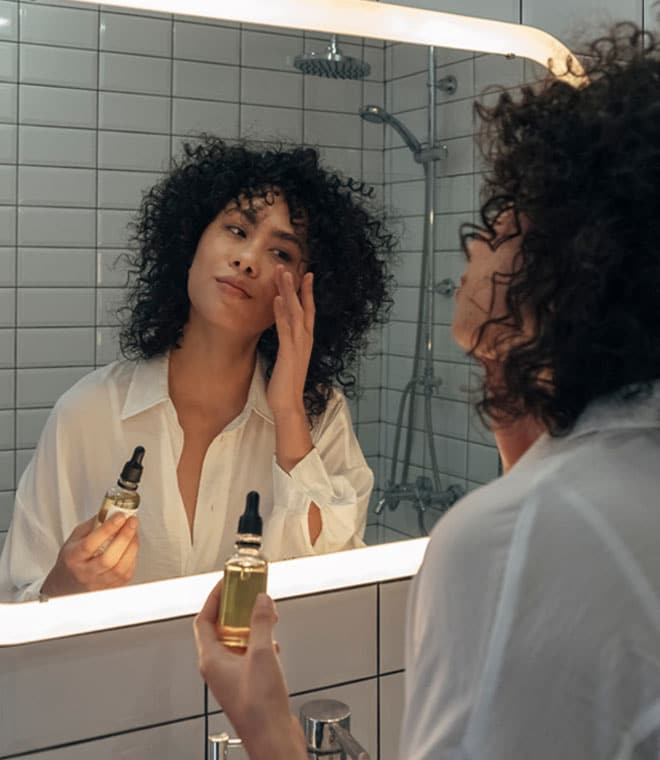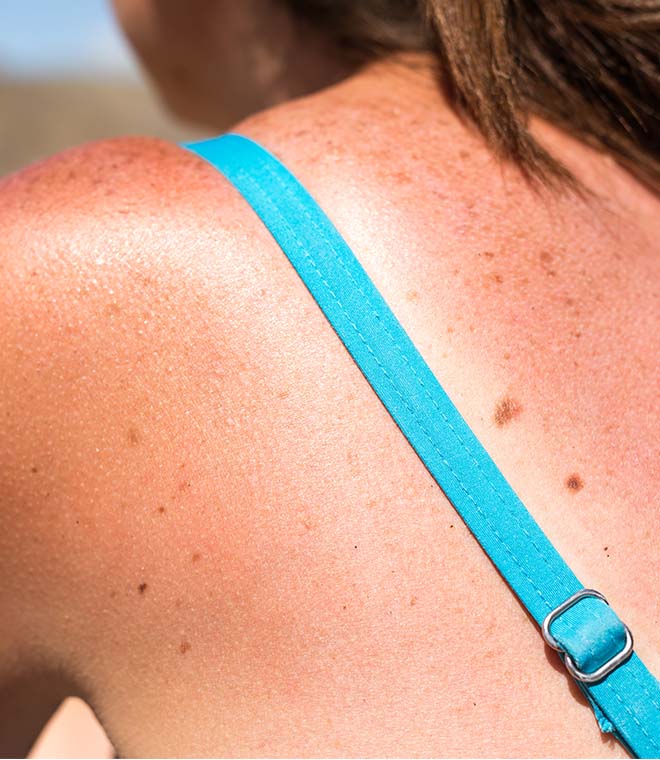Beauty
Sun care buying guide: How to choose sunscreen
By Walgreens Oct 21, 2021 • 5 min.
Here's what you should know to help protect your skin and navigate the sun care aisle a little easier.
From sticks to sprays, lotions to creams, here's what to look for to help keep your skin protected, hydrated and healthy this season.
Sun protection 101
No matter what your summer activities entail, always look for a broad-spectrum, water-resistant sunscreen with a sun protection factor (SPF) of 30 or higher. When choosing a sunscreen, make sure it:
- Has a sun protection factor or SPF of 30 or higher. What does SPF mean? It refers to the level of protection the sunscreen provides against the sun's harmful ultraviolet B (UVB) rays. An SPF 30 sunscreen blocks close to 97% of UVB rays, while an SPF 50 sunscreen filters out about 98% of UVB rays.
- Is labeled as broad spectrum or states it protects against ultraviolet A (UVA) and ultraviolet B (UVB) rays. UVB radiation can burn your skin, but UVA rays are dangerous, too. UVA rays can speed up skin aging. Too much exposure to either UVA or UVB rays can cause skin cancer. The safest sunscreen choice is one that filters both types of radiation and is used as directed.
- Is water-resistant. This means the sunscreen can still briefly work on wet or sweaty skin. Still, you should reapply sunscreen right after swimming, sweating or drying off. Know that no sunscreen is waterproof or sweatproof.
Sport and water-resistant sunscreens
If you're planning on enjoying summer sports or activities, a sport or water-resistant sunscreen can help protect your skin. Unlike regular sunscreen, sport and water-resistant sunscreens are usually tested to measure how long you can swim before the SPF starts to wear off (i.e., 40 or 80 minutes). However, whether or not your sunscreen is water-resistant, be sure it is broad spectrum.
More natural sunscreens
If you're looking for something more natural, some people turn to organic or biodegradable sunscreens. If you go this route, make sure you read labels closely.
Sunscreens can contain chemical or physical ingredients, or a combination of both. Chemical-based sunscreens ingredients, such as oxybenzone and avobenzone, protect your skin by absorbing UV rays and converting them into heat energy. Physical or mineral sunscreens, on the other hand, protect you by reflecting UV rays before they reach your skin. Titanium dioxide and zinc oxide are examples of physical sunscreen ingredients. Sunscreens that contain these products reflect UVA and UVB rays and provide broad-spectrum protection.
Types of sunscreen
The kind of sunscreen you choose to use can depend on a number of factors. You may consider how easy it is to apply and how it feels, where it is being applied, your skin type and your activities for the day.
- Sticks: Helpful to use on the face to avoid getting in the eyes
- Lotions: May be easier to spread
- Gels: Good for hairy areas
- Creams: A good option to use on dry skin and the face
- Sprays: May be easier to apply to children. Apply it in a well-ventilated location, and be careful not to inhale while spraying. Never spray it directly onto your face. Instead, spray it onto your hands and then use your fingers to apply to your face. Make sure to use enough to thoroughly cover all of your exposed skin.
Other ways to keep your skin sun-safe
Avoiding the sun's harmful rays and other sources of UV radiation is the best way to protect your skin. Stay out of the sun and seek shade between the hours of 10 a.m. and 4 p.m. when the sun's rays are strongest. Wear a water-resistant, broad-spectrum sunscreen with an SPF 30 or higher anytime you're in the sun for more than a brief period, and try wide-brimmed hats, sunglasses and clothes that protect exposed skin.
Clinically reviewed and updated October 2021.
Sources:
3. https://www.cancer.org/latest-news/choose-the-right-sunscreen.html
4. https://www.skincancer.org/prevention/sun-protection/sunscreen/sunscreens-explained
5. https://www.health.harvard.edu/cancer/how-to-choose-and-use-sunscreen
6. https://www.ewg.org/sunscreen/all-sunscreens/#.Wudxg_krJD8
7. https://www.aad.org/media/stats/prevention-and-care/sunscreen-faqs



